Writing An Email in Chinese 🤔 It’s Easier Thank You Think
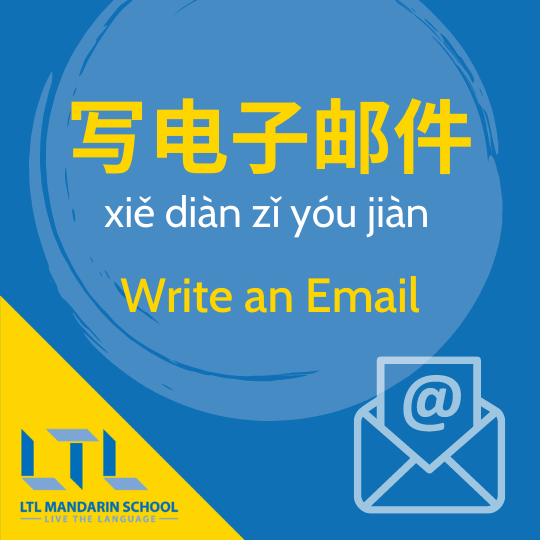
We get asked a lot of questions about Mandarin (obviously) but one that our business Chinese students tend to ask is how to write an email in Chinese?
On the back of that, and our successful “How to write a CV in Chinese” article, we thought it was the right time to drop this one for you!
This guide will teach you:
- How to prepare a perfect email in Mandarin
- The key grammar you need to use
- Keywords that are super useful for emails
… and a whole lot more!
How to Write an Email in Chinese – First Things First
How to Write an Email in Chinese – To, From & Subject
How to Write an Email in Chinese – Titles
How to Write an Email in Chinese – The Content Itself
How to Write an Email in Chinese – Useful Phrases
How to Write an Email in Chinese – Signing Off
How to Write an Email in Chinese – Your Signature
How to Write an Email in Chinese – Example Emails
How to Write an Email in Chinese – FAQ’s
DID YOU KNOW – To write an email translates to 写电子邮件 (xiě diàn zǐ yóu jiàn).
How to Write an Email in Chinese – First Things First
Before we get stuck into the vocab and how to build an email in Chinese it’s important to know these things.
- Punctuation in Chinese, although effectively the same, looks a little different on screen, so be sure to use these instead of the English equivalents
| Punctuation using English | Punctuation using Chinese |
|---|---|
| Text here. Then more | Text here。Then more |
| Text here, then more | Text here,then more |
| Text here? Then more | Text here?Then more |
| Text here! Then more | Text here! Then more |
It’s also worth noting there is a second type of comma in Chinese which looks like this
Text here、text here
This comma is used to separate nouns, just to confuse matters a little!

- Emails in Chinese are formal. In English emails can of course be a mixture of formal and informal depending on who you are speaking to but in China, generally emails always follow a formal approach.
Due to this, you tend to use words you might not often be familiar with when speaking.
When you get to more advanced levels of Chinese you’ll discover there are plenty of words for vocabulary like “cause” or “create” so it’s important to know which to use when writing an email in Chinese.
It all comes with practice! Having a Chinese friend/colleague really helps in instances like this but for now, we’ll be your guide!
OK with these two key notes out the way, let’s get stuck in and write an email in Chinese!
How to Write an Email in Chinese – To, From & Subject
Before you start writing your email in Chinese we need to address the email to someone and give the email a subject so the receiver knows what’s coming their way.
Here are the key terms you need to get going:
| English | Hanzi | Pinyin |
|---|---|---|
| To / Recipient | 收件人 | shōu jiàn rén |
| CC | 抄送 | chāo sòng |
| BCC | 隐式抄送 | yǐn shì chāo sòng |
| From | 发件人 | fā jiàn rén |
| Date | 日期 | rì qī |
| Subject | 主题 | zhǔ tí |
Some key characters in there we will highlight now so you can piece the puzzle together:
- 人 : One of the most common Chinese characters, and one you may well already be familiar with. Rén simply means person, an easy one to remember given the fact the character looks like a walking person!
- 发 : fā means to send. Another character that pops up often in day to day conversation.
- 日 : rì means day and is, again, one of the most commonly seen characters.
WANT TO TEST YOUR CHARACTER KNOWLEDGE? Why not take our quick-fire test to see how many of the most common Chinese characters you know.
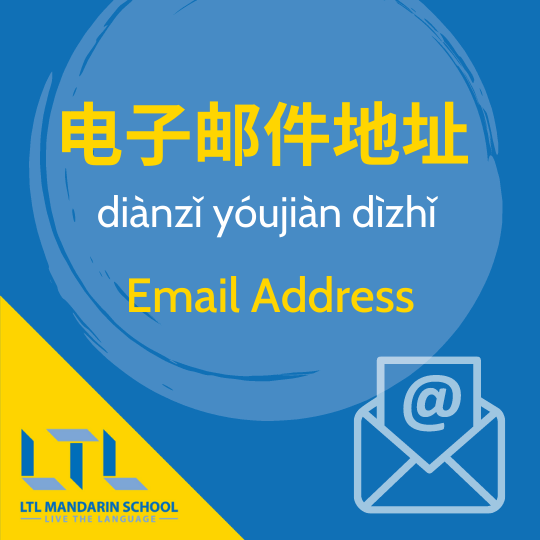
Anyway back to the matter in hand.
We now know how to start writing an email in Chinese, but…
Can you decode the following?
发件人 – [email protected]
收件人 – [email protected]
抄送 – [email protected], [email protected]
日期 – Sometime in 2021
主题 – All things Marketing
Who is the sender and who is being CC’d? Why not tell us in the comments below?
How to Write an Email in Chinese – Titles
Formal
There are a number of ways you can address a person in an email, here is a useful list to help you decide which is best for you.
| English | Hanzi | Pinyin |
|---|---|---|
| Respectable / Dear | 尊敬的 | zūn jìng de |
| Ms / Mrs | 女士 | nǚ shì |
| Mr | 先生 | xiān sheng |
| Ms or Mrs (plural) / Ladies | 女士们 | nǚ shì men |
| Mr (plural) / Gentlemen | 先生们 | Xiānshēngmen |
| Subject | 主题 | zhǔ tí |
The top one on that list 尊敬的 zūn jìng de is your starting point, followed by the name (normally the surname in Chinese) and then the gender/position.
So if you wanted to address Teacher Wang, you’d open the email with:
尊敬的Wang老师
QUICKFIRE QUIZ – What is written here? Comment below with the answer! We’ll tell if you got it right!
尊敬的李女士 zūn jìng de lǐ nǚ shì
Informal
There are a number of less formal options which we’ll list here also. You can select the most relevant for you:
- 亲爱的 qīn ài de (replacement for zūn jìng de)
- 您好 nín hǎo or 你好 (nǐ hǎo) – back to the simple basics of Hello in Chinese
- 敬爱的 jìng ài de – specifically used between teachers
You’ll see you have a number of options to choose from. If you are unsure, drop us a comment below and we’ll try our best to help.
Of course though, don’t forget to ask native Mandarin speakers!

How To Write A Killer Cover Letter In Chinese 👩🏼💼 Tips, Tricks and Vocab You Need To Know
Want to write the perfect cover letter in Chinese? It’s formal and you need to strike the write notes. This guide will see you passing with flying colours.
How to Write an Email in Chinese – The Content Itself
This of course will vary with every email you write, because no two emails are always exactly the same, however there are some more common exchanges than others.
Below we’ll provide some further examples of actual emails but for now here’s some simple situations you may well stumble across.
- Can you send the report over?
- 您可以发送报告吗?
- Nín kěyǐ fāsòng bàogào ma?
报告 is report and 发送 is to send. They are the keywords in this sentence.
- The meeting is 3pm tomorrow afternoon
- 会议是明天下午三点
- Huìyì shì míngtiān xiàwǔ sān diǎn
会议 is the keyword here which means meeting. The rest is more basic Mandarin and numbers in Chinese.
- Your account details are incorrect, our IT department will look into this for you.
- 您的帐户详细信息有误,我们的IT部门将为您进行调查。
- Nín de zhànghù xiángxì xìnxī yǒu wù, wǒmen de IT bùmén jiāng wèi nín jìnxíng diàochá.
Department is 部门 and 帐户 is account. These are two keywords that come up a lot, especially in the workplace.
调查 means to investigate. Notice how 您 is being used (the formal version of you), rather than 你.
- Our website is down, please fix this as soon as possible
- 我们的网站已关闭,请尽快解决此问题
- Wǒmen de wǎngzhàn yǐ guānbì, qǐng jǐnkuài jiějué cǐ wèntí
网站 means website and 尽快 means immediately. Needless to say this is a very important email!
BONUS || Check out how to write Business Emails in Chinese!
How to Write an Email in Chinese – Useful Phrases
As mentioned already, when it comes to writing emails, an element of formality comes into play that doesn’t often come out when speaking, and the same applies with Chinese.
We might know how to speak and get our point across but getting the grammar correct, and the words right is key.
Hopefully these phrases will help you to link sentences and add a touch of class to your emails in Mandarin:
| English | Hanzi | Pinyin |
|---|---|---|
| To whom it may concern | 敬启者 | jìng qǐ zhě |
| Sorry for my late reply | 抱歉晚回复 | bàoqiàn wǎn huífù |
| Please note that | 请知悉 | qǐng zhīxī |
| Thank you for your email | 谢您的来信 | gǎn xiè nín de lái xìn |
| Please find X attached | 附件是 X,请查收 | fù jiàn shì X qǐng chá shōu |
| Please forward X to me | 请把 X 转给我 | qǐng bǎ X zhuǎn gěi wǒ |
| Received | 收到了 | shōu dào le |
| Apologies for any inconvenience | 如有不便之处,敬请见谅 | rú yǒu bú biàn zhī chù, jìng qǐng jiàn liàng |
How to Write an Email in Chinese – Signing Off
So you’ve written your email in Chinese, congratulations!
Now it’s time to sign it off.
Here are some of your best options we’d like to show you:
| English | Hanzi | Pinyin |
|---|---|---|
| Looking forward to hearing from you | 期待您的答复 | qī dài nín de dáfù |
| All the best | 顺祝商祺 | shùn zhùshāngqí |
| Wish you well | 祝好 | zhù hǎo |
| Take care | 保重 | bǎo zhòng |
| Wishing you health | 祝您健康 | zhù nín jiàn kāng |
| Best Regards (MOST FORMAL) | 此致敬礼 | cǐ zhì jìng lǐ |
Simply put, your go-to choice for a formal email should always be the last choice on that list – 此致敬礼.
If you are addressing someone you don’t know, we’d advise to stick with this one.
If you know the person relatively well, any of the other options will suffice.

500+ Chinese Vocabulary 📚Your Complete List
Chinese Vocabulary: Food, Shopping, Colors, Numbers, Sports and MORE! Learn from over 50 categories of Chinese Vocabulary to get by in China.
How to Write an Email in Chinese – Your Signature
Although this isn’t essential, it’s worth translating your email signature to Chinese if you are in regular contact with Chinese native speakers.
If you work for a Chinese company your signature should already be in Chinese, but it’d be good if you understood each element of it, right?!
Here’s our quick-fire guide to email signatures in Chinese.
马克思 / Max Hobbs
市场总监 / Marketing Director
乐特乐公司 / LTL
地址 – Your Address Here
电话 – Your Phone Number Here
邮箱 – Your Email Here
地址 (dì zhǐ) means physical address, 电话 (diàn huà) is phone number and 邮箱 (yóu xiāng) is a mailbox.
How to Write an Email in Chinese – Example Emails (Templates)
Time to put all of that into practice.
To give you a visual look at what everything looks like, here are some examples of emails fully in Mandarin.
Email 1
This is a generic Zoom email, something which I’m sure the vast majority of you are familiar with after 2020!
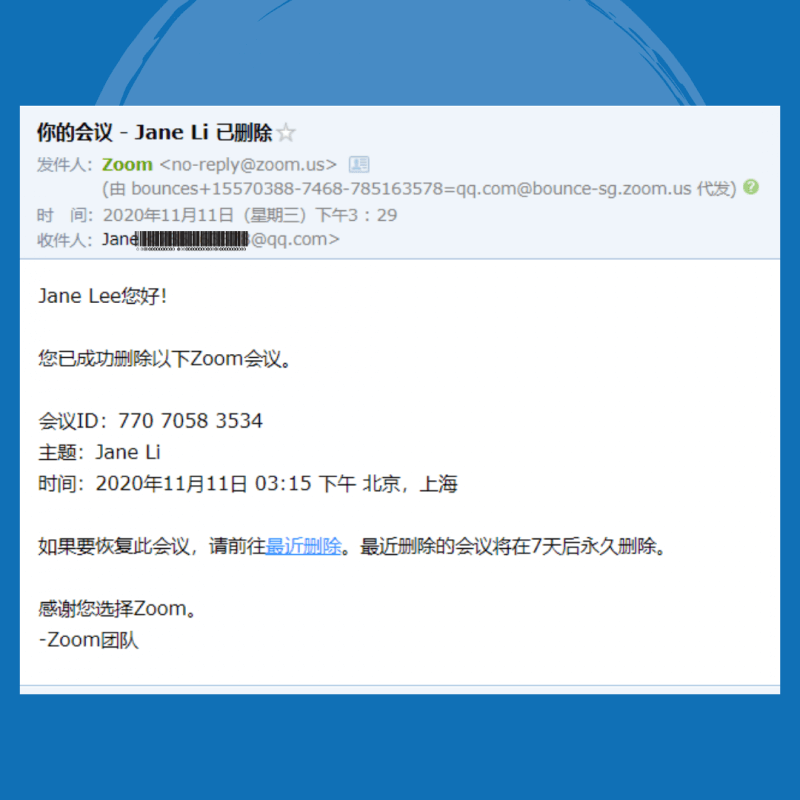
What did you understand and what did you struggle with? Let us know in the comments below.
Can you spot any of the keywords we discussed above? Did you see how the email was addressed and how it signed off?
To help you out below we’ve copied the Hanzi (with pinyin) so you can copy the text into Google or Baidu translate if you so wish 🙂
发件人:Zoom
时 间:2020年11月11日(星期三)下午3 : 29
收件人:Jane <[email protected]>
Jane Lee您好!
Jane Lee nín hǎo!
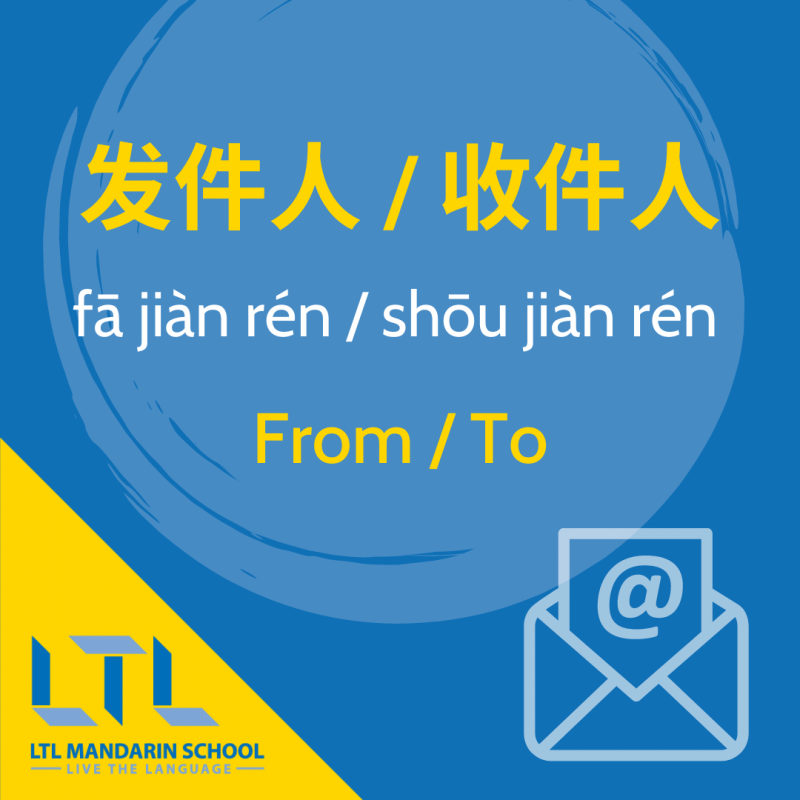
您已成功删除以下Zoom会议。
Nín yǐ chénggōng shānchú yǐxià Zoom huìyì.
会议ID:770 7058 3534
主题:Jane Li
时间:2020年11月11日 03:15 下午 北京,上海
Yì ID: 770 7058 3534
Zhǔ tí: Jane Li
Shí jiān: 2020 Nián 11 yuè 11 rì 03:15 Xiàwǔ běijīng, shànghǎi
如果要恢复此会议,请前往最近删除。最近删除的会议将在7天后永久删除。
Rúguǒ yào huīfù cǐ huìyì, qǐng qiánwǎng zuìjìn shānchú. Zuìjìn shānchú de huìyì jiāng zài 7 tiānhòu yǒngjiǔ shānchú.
感谢您选择Zoom。
-Zoom团队
Gǎnxiè nín xuǎnzé Zoom.
-Zoom tuánduì
Email 2
This is only part of an email but your challenge here is to understand what it’s about.
There are still plenty of keywords on show that we think you’ll be able to work it out. If not, we’ll reveal all below anyway!
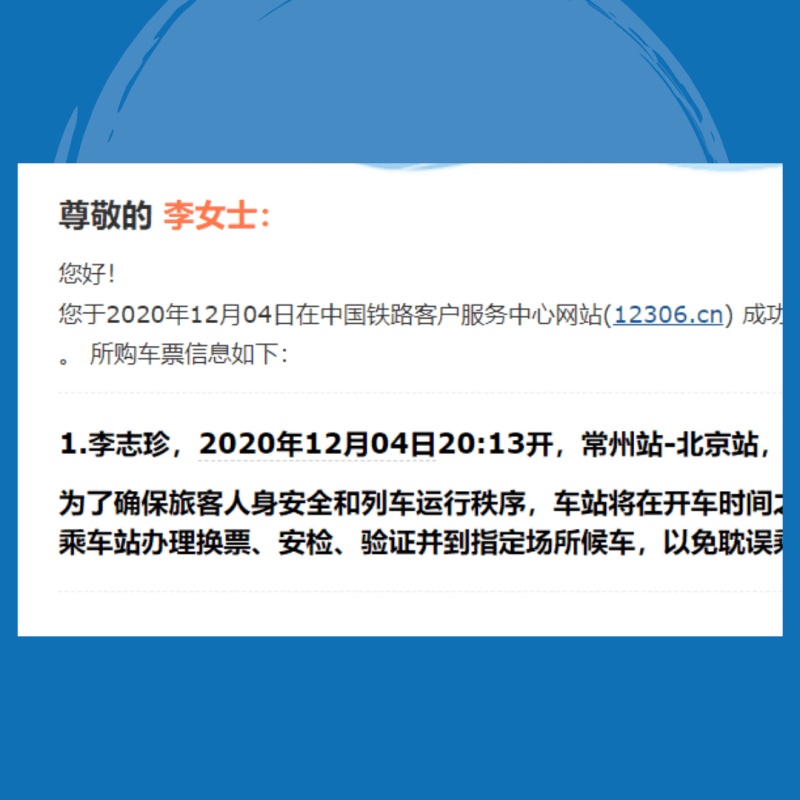
Firstly note the introduction, 尊敬的 followed by the name, just as we discussed above!
So keywords to take here:
- 车票 – Train Ticket
- 车站 – Train Station
- 常州 – Chang Zhou (a city in China)
- 北京 – Bei Jing (the capital city of China)
With just these four keywords, and the giveaway of the date and time, you should already know this email is train ticket confirmation email.
It proves even by just knowing a little Chinese, you can use your brain to decode more than you might think.
Email 3
Final one for now, can you figure this one out:

The first thing to take from this email is who it’s from.
JD (Jing Dong) is a mammoth Chinese Online Retailer where you can buy anything and everything.
See how they introduced the email using the informal method as well.
会员 means member.
So this is an email from an online retailer to a member. Other keywords include:
- 月度 – Monthly
- 账单 – Bill
- 我的订单 – My Orders
Rather than complete the picture, why don’t you try and finish the job? Tell us below what else you can decode!
READY FOR MORE? We’ve followed up this post with another on how to write the perfect cover letter in Chinese! Come and check it out, it includes FREE downloadable template letter also!
We’ve also written a guide to working for a Chinese company so you can get a clear idea of what to expect when coming to work in China.
How to Write an Email in Chinese – FAQ’s
How do you say “e-mail” in Chinese?
Email in Chinese is 电子邮件 diànzǐ yóujiàn.
It is commonly referred to as 电邮 diànyóu.
How do you say “e-mail address” in Chinese?
Email Address in Chinese is 电子邮件地址 diànzǐ yóujiàn dìzhǐ
How do you say “Send” in Chinese?
发 : fā means to send.
This is a character that pops up often in day to day conversation.
What is “CC” in Chinese?
CC in Chinese is 抄送 chāo sòng.
What is “BCC” in Chinese?
BCC in Chinese is 隐式抄送 yǐn shì chāo sòng.
What is “Thank you for your e-mail” in Chinese?
Thank you for your email in Chinese is 谢您的来信 gǎn xiè nín de lái xìn.
How would I sign off an email in Chinese?
The best, and most common way to sign-off an email in Chinese would be to use cǐ zhì jìng lǐ 此致敬礼 which means along the lines of “best regards”.


 Hi, my name is Mojca! I am from Slovenia and I work as a student advisor at our Shanghai school.
Hi, my name is Mojca! I am from Slovenia and I work as a student advisor at our Shanghai school.


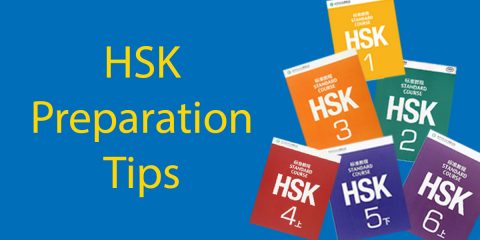



1 comments
[…] COME – Scrivi l’email perfetta in cinese […]